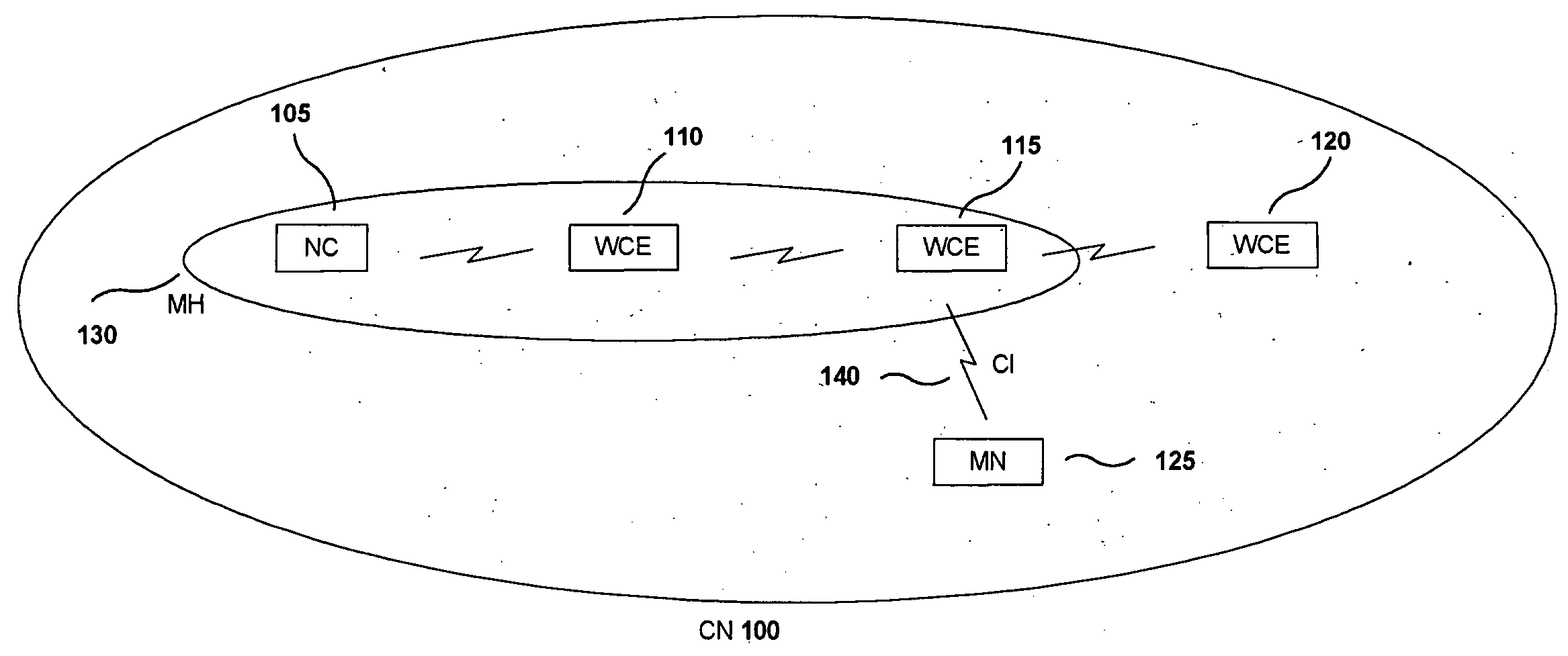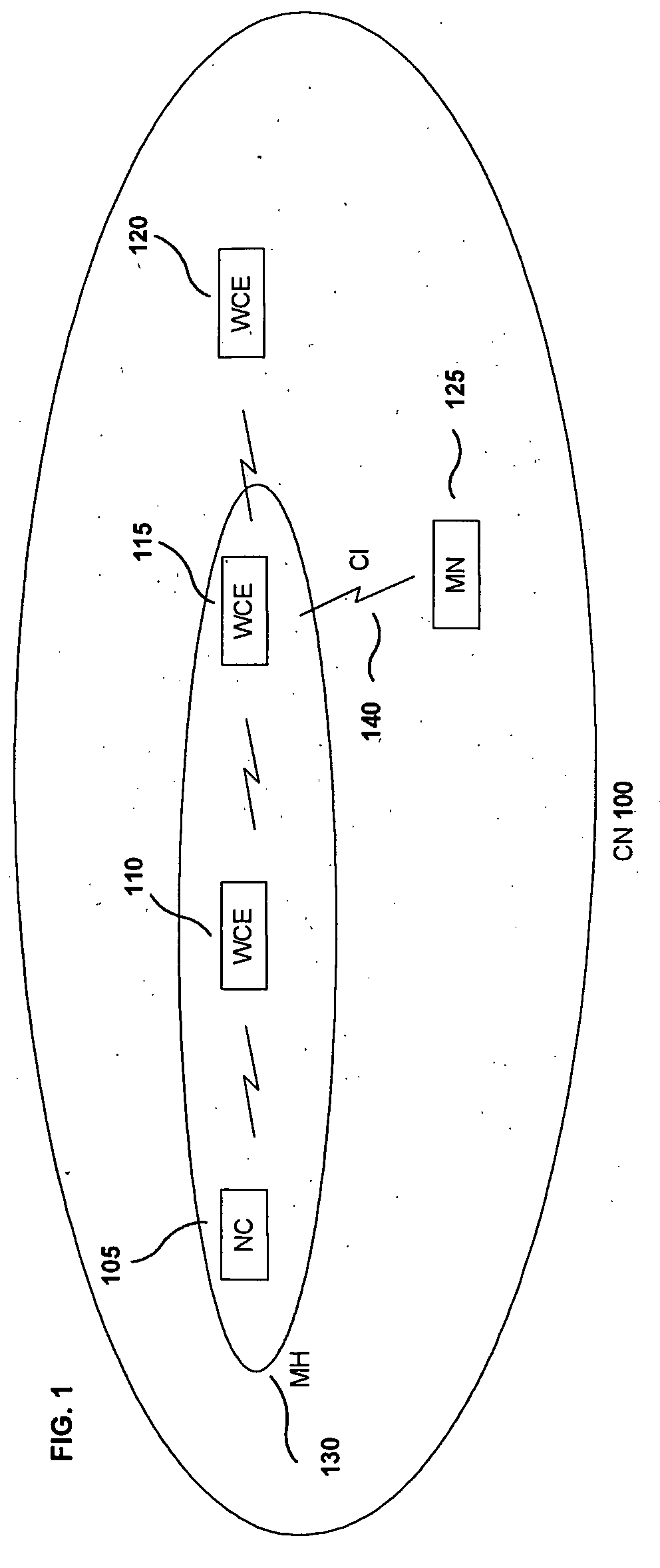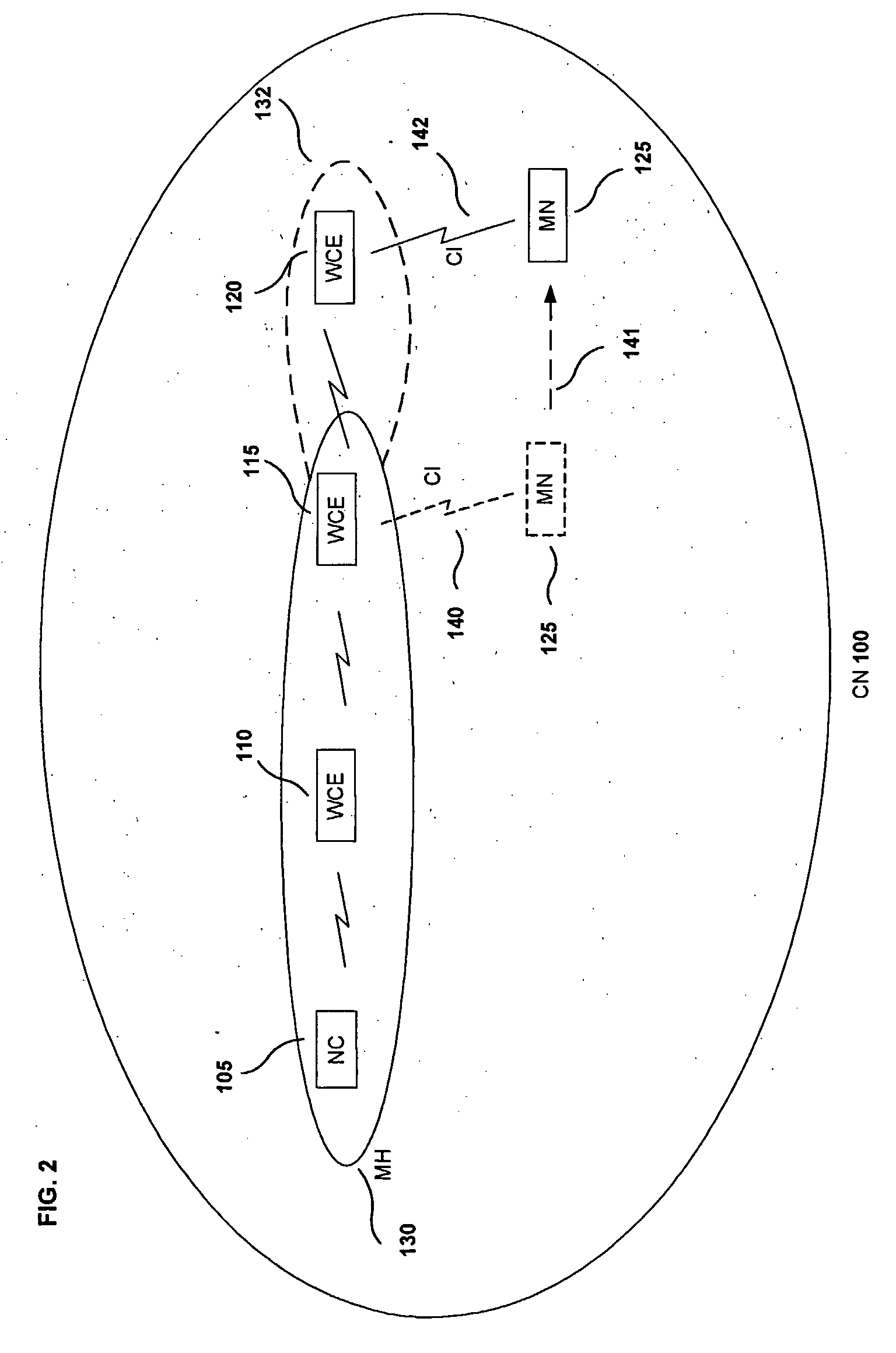System and method for mobility in multihop networks
a multi-hop network and multi-hop technology, applied in the field of communications network operations, can solve the problems of large complexity and communication delays, large overhead of mesh networks, plurality of neighbours, etc., and achieve the effect of reducing communication delay and improving communication throughpu
- Summary
- Abstract
- Description
- Claims
- Application Information
AI Technical Summary
Benefits of technology
Problems solved by technology
Method used
Image
Examples
embodiment 1
Network Spring
[0048]With reference to FIG. 1, a communications network (CN) (100) in accordance with the current invention is illustrated. CN (100) comprises a network controller (NC) (105), a single or plurality of wireless communications entities (WCE) (110), (115) and (120) and a single or plurality of Mobile Nodes (MN), such as MN (125).
[0049]NC (105) is representative of a controller entity capable of coordinating network resources, provisioning and configuring WCEs and MNs, such as WCE (110), WCE (115), WCE (120) and MN (12.5), and coordinating communications flows among them. NC (105) may be an access controller, Mobile Multihop Relay (MMR) base station or other type of base station. WCEs are representative of communications devices such as wireless access points or relay stations, capable of transmitting, receiving and relaying communications traffic. MN (125) is representative of a mobile devices operating on a single or plurality of wireless communications technologies suc...
embodiment 2
Alternative MH-Chain, Net-Spring Type
[0068]In one aspect of the invention, multihop chains are configured to comprise mobile nodes in addition to WCEs. FIG. 4 is illustrative of CN (100) comprising such a multihop chain.
[0069]In CN (100) of FIG. 4, multihop chain MH (405) comprises mobile node MN (125), NC (105), WCE (110) and WCE (115). Communications entities constituting MH (405) are communicably coupled by means of communications interfaces operating on a single or plurality of communications technologies comprising Bluetooth, IEEE 802.11, IEEE 802.16, GPRS, WCDMA or CDMA2000. MN (125) is communicably coupled to WCE (115) through a communications interface CI (410).
[0070]In accordance with the present invention for managing mobility, MH (405) is associated with a Hop-Spring representative of the path length of MH (405). In initial state, path length and Hop-Spring of MH (405) is “3” hops. The Hop-Spring adapts on the basis of mobility events in CN (100).
[0071]In a subsequent ste...
embodiment 3
Sequence of Net-Spring
[0074]The Hop-Spring method of multihop chain adaptation is performed at the location of mobility event. FIG. 5 is illustrative of a sequence of adaptation operations (500) among NC (105), WCE (110), WCE (115), WCE (120) and MN (125) of CN (100).
[0075]The operative steps of (500) are performed in accordance with a single or plurality of communications protocols such as those comprising the set of Bluetooth, IEEE 802.11, IEEE 802.16, CAPWAP, GPRS, WCDMA and CDMA2000. In one aspect of the invention of Net-Spring, operative messages of (500) are exchanged as control messages of said communications protocols. In other aspects of the present invention, operative messages of (500) are exchanged as combinations of control messages and payload of data messages of said communications protocols.
[0076]In the current embodiment, NC (105), WCE (110) and WCE (115) of CN (100) constitute multihop chain MH (130) In an initial communications coupling step (505), MN (125) is com...
PUM
 Login to View More
Login to View More Abstract
Description
Claims
Application Information
 Login to View More
Login to View More - R&D
- Intellectual Property
- Life Sciences
- Materials
- Tech Scout
- Unparalleled Data Quality
- Higher Quality Content
- 60% Fewer Hallucinations
Browse by: Latest US Patents, China's latest patents, Technical Efficacy Thesaurus, Application Domain, Technology Topic, Popular Technical Reports.
© 2025 PatSnap. All rights reserved.Legal|Privacy policy|Modern Slavery Act Transparency Statement|Sitemap|About US| Contact US: help@patsnap.com



